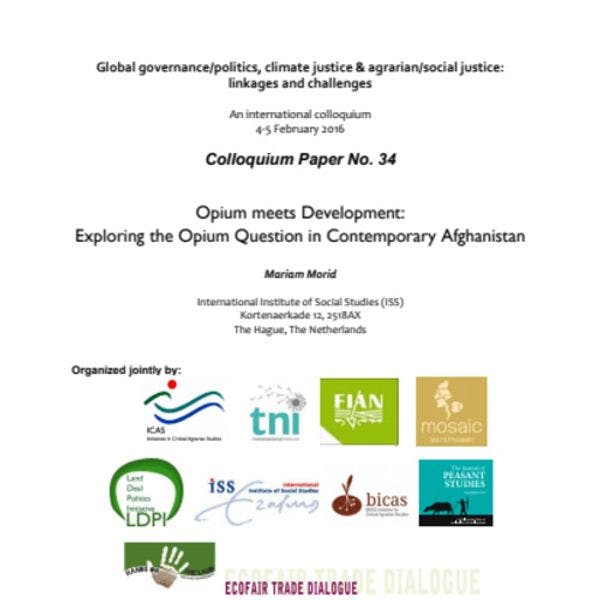El nexo entre opio y desarrollo: análisis de la cuestión del opio en el Afganistán actual
Este informe analiza las medidas y políticas de lucha contra las drogas en el Afganistán de hoy en día y examina la interacción de los diversos actores políticos desde la intervención militar de 2001. Más información, en inglés, está disponible abajo.
Suscríbase a las Alertas mensuales del IDPC para recibir información sobre cuestiones relacionadas con políticas sobre drogas.
In light of the forthcoming April 2016 United Nations General Assembly Special Session (UNGASS), it has been repeatedly emphasized that a change of the global order on drug policy should be made. Any outcome of UNGASS, whether reform or business as usual, will have essential developmental impacts on Afghanistan’s economy and especially on those involved in the agricultural production side of the opium economy that is farmers and farm-workers. Therefore, this examination of the nature and the political economy of counternarcotics in Afghanistan from a development perspective aims to inform the debate on drug policy reform at national and international scales.
The paper analyzes the counternarcotics efforts and policies in Afghanistan and examines the interplay of political actors since the military intervention in 2001. It discusses the initially dominant counter-narcotics approach, categorized here as that of ‘War on Opium’ articulated through an opium farming eradication strategy. Outcomes of this strategy are briefly discussed as those shaping the move to what is considered here as the currently dominant counternarcotics approach of ‘Development for Opium’ ranging from ar ound 2009 until today and articulated through an alternative livelihoods strategy.
It argues that this can be considered a ‘positive’ kind of strategy, which seeks consent by opium farmers by means of (economic) developmental discourse as the preferred mechanism of implementation. The repertoire of actions is now allegedly broader and centered on opium crop-substitution. Discussions of the autonomy and capacity have been used to shine light on certain groups steering the current Afghan state to implement a counternarcotics strategy beyond a ‘sectorial policy’ of opium combat and contributing to their state- building project. A project which, arguably, relies on (rural) livelihood improvement to strive for the pacification of Afghanistan’s majority of agrarian (an allegedly unruly) population.
Keep up-to-date with drug policy developments by subscribing to the IDPC Monthly Alert.
